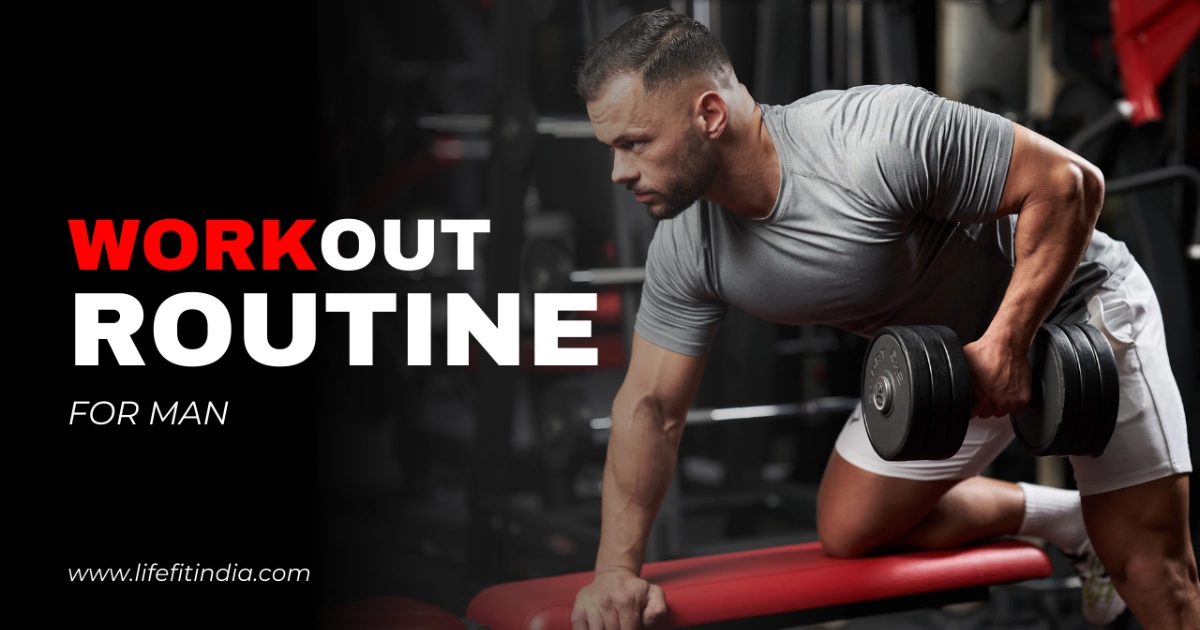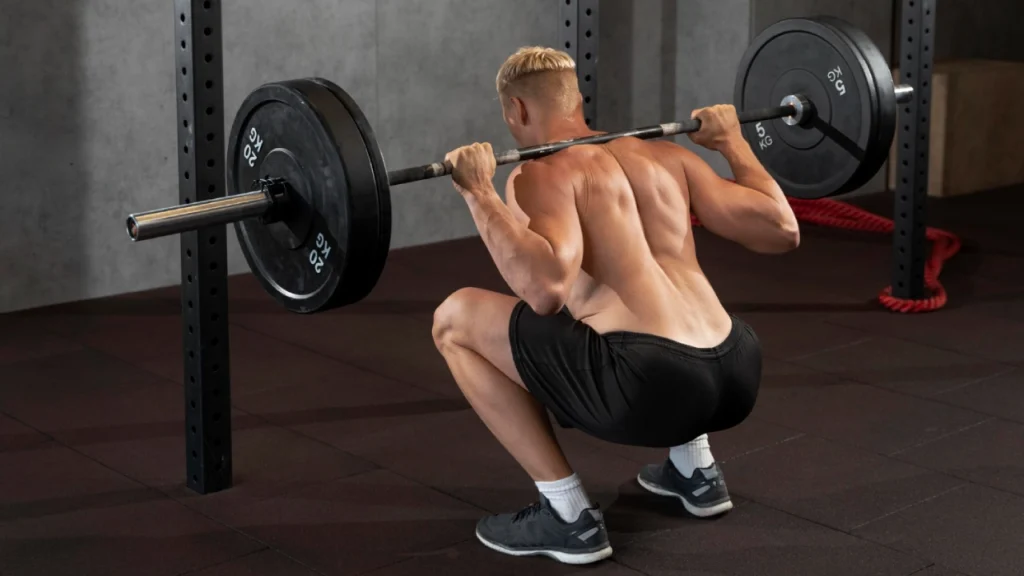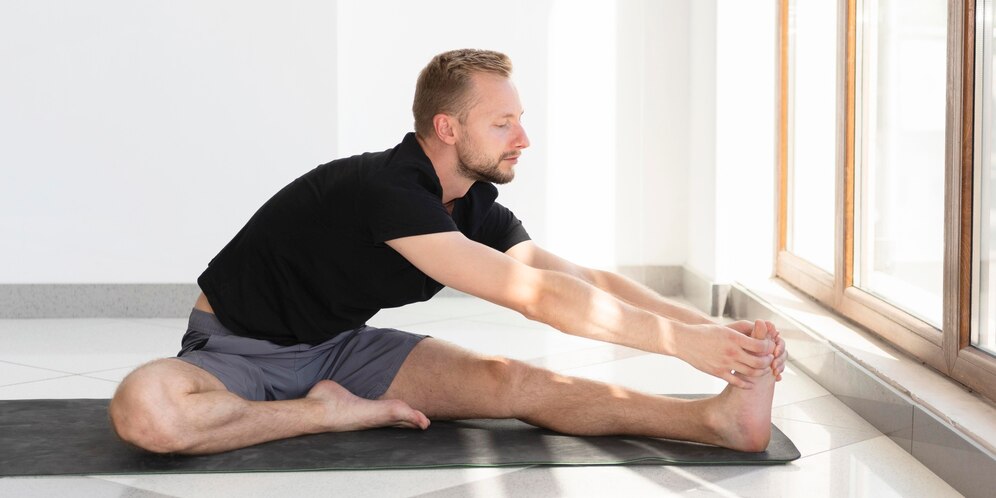Effective Workout Routines for Men: Your Ultimate Guide

Starting a fitness journey or looking to improve your current one? Having a plan is key. Random workouts might feel productive, but structured workout routines for men are the real game changer for seeing results and staying consistent. Whether you want to build muscle, lose weight, or just feel healthier, the right routine makes all the difference. This guide will walk you through creating effective workout routines for men, setting goals, and understanding the essential parts of a great fitness plan. Let’s get started on building a stronger, healthier you.
Why Follow a Workout Routine?
It might be tempting to just hit the gym and do whatever feels right. But having a set plan offers big advantages:
- Consistency: A routine removes guesswork. You know what to do each day, making it easier to stick with your plan.
- Progress Tracking: Structured workout routines allow you to monitor your progress. You can see how much stronger you’re getting or how your endurance is improving.
- Efficiency: A good plan ensures you work all major muscle groups over time, preventing imbalances and making your workouts more effective.
- Motivation: Seeing progress and knowing what’s next can keep you motivated. Check out these 5 ways to stay motivated on your fitness journey for extra tips.
- Injury Prevention: Proper routines incorporate warm ups, cool downs, and rest, reducing your risk of getting hurt.
Setting Your Fitness Goals for Men
Before diving into exercises, figure out what you want to achieve. Common fitness goals for men include:
- Building Muscle (Hypertrophy): Increasing the size of your muscles.
- Gaining Strength: Lifting heavier weights and improving overall power.
- Losing Weight/Fat: Reducing body fat while maintaining muscle.
- Improving Endurance: Being able to perform physical activity for longer periods.
- General Health & Fitness: Staying active, feeling better, and improving overall well being.
Make Your Goals SMART
To make your goals more effective, use the SMART criteria:
- Specific: Clearly define your goal. Instead of “get stronger,” try “increase my bench press by 10 kgs.”
- Measurable: How will you track progress? (e.g., weight lifted, distance run, body measurements).
- Achievable: Is the goal realistic for your current fitness level and timeframe?
- Relevant: Does the goal align with your overall health objectives?
- Time bound: Set a deadline. “Increase my bench press by 10 kgs in 3 months.”
Key Components of Effective Workout Routines for Men
A well rounded fitness plan usually includes three main types of exercise. Balancing these is key for the best workout routines for men.
1. Strength Training for Men
Strength training for men is vital for building muscle, boosting metabolism, strengthening bones, and improving body composition.
Free Weights vs. Machines vs. Bodyweight
- Free Weights (Dumbbells, Barbells, Kettlebells): Highly versatile, they mimic real life movements and engage smaller stabilizer muscles. Great for building functional strength and power. They require learning proper form. Explore different dumbbell types or consider hexagonal dumbbells.
- Machines: Offer guided movements, making them safer for beginners learning form. Excellent for isolating specific muscles. Check out options like the leg extension/curl machine, hack squat/leg press, or a functional trainer. Explore our ultimate guide to exercise equipment machines.
- Bodyweight: Uses your own body for resistance (push ups, squats, lunges, planks). Convenient, free, and great for building foundational strength, balance, and core stability. Push ups offer great benefits.
Compound vs. Isolation Exercises
- Compound Exercises: Work multiple muscle groups and joints at once (e.g., squats, deadlifts, bench press, overhead press, rows). Highly efficient for building overall strength and muscle mass. Learn the benefits of squats.
- Isolation Exercises: Target a single muscle group (e.g., bicep curls, triceps extensions, leg extensions, calf raises). Useful for addressing specific muscle weaknesses or adding extra volume for muscle growth. Master the barbell curl or the pec deck fly.

2. Cardiovascular Exercise (Cardio)
Cardio strengthens your heart and lungs, improves blood circulation, helps with weight management, and boosts endurance. Aim for at least 150 minutes of moderate intensity or 75 minutes of vigorous intensity cardio per week, as recommended by health organizations like the Mayo Clinic.
Steady State vs. HIIT
- Steady State Cardio (LISS): Maintaining a consistent, moderate intensity pace for a longer duration (e.g., jogging, cycling, swimming, elliptical). Great for building aerobic endurance and burning calories during the activity. Find the best treadmill for home use or explore elliptical cross trainers.
- High Intensity Interval Training (HIIT): Short bursts of very intense exercise followed by brief recovery periods. Very time efficient, boosts metabolism (afterburn effect), and improves VO2 max (oxygen utilization). Can be done with various activities like sprinting, cycling, rowing, or bodyweight circuits. Discover the benefits of air bikes or the air rower machine.
Explore our guides on the best cardio gym equipment and ultimate guide to cardio equipment at the gym.

3. Flexibility and Mobility
Often overlooked, flexibility (muscle length) and mobility (joint range of motion) are crucial.
- Benefits: Improves posture, reduces stiffness, enhances performance, lowers injury risk.
- How to Include:
- Dynamic Stretching: Active movements that take joints and muscles through a range of motion (e.g., arm circles, leg swings, torso twists). Best done during warm ups.
- Static Stretching: Holding a stretch for 15-30 seconds (e.g., hamstring stretch, quad stretch). Best done during cool downs when muscles are warm.
- Mobility Exercises: Specific drills targeting joint movement (e.g., hip circles, shoulder CARs, cat cow stretch). Can be done daily or as part of warm ups/cool downs. Consider yoga poses for beginners using a quality yoga mat.
Structuring Your Workout Session
How you organize each workout matters. A typical session includes:
1. The Warm Up (5-10 minutes)
- Purpose: Gradually increases heart rate, blood flow, and muscle temperature. Prepares the body for exercise and reduces injury risk.
- What to do: Light cardio (jogging, cycling) followed by dynamic stretches relevant to your workout (e.g., leg swings before squats, arm circles before bench press). Source: American Heart Association
2. The Main Workout (30-60+ minutes)
- Content: This is where you perform your planned exercises (strength, cardio, or a mix).
- Structure:
- Exercise Order: Often best to do compound exercises first when you’re fresh, followed by isolation exercises.
- Sets, Reps, Rest: Tailor these to your goals:
- Strength: Lower reps (e.g., 3-6), heavier weight, longer rest (2-5 min).
- Muscle Growth (Hypertrophy): Moderate reps (e.g., 6-12), moderate to heavy weight, moderate rest (60-90 sec).
- Endurance: Higher reps (e.g., 12-15+), lighter weight, shorter rest (30-60 sec).
- Start with 1-3 sets per exercise if you’re a beginner, increasing as you adapt.
3. The Cool Down (5-10 minutes)
- Purpose: Allows heart rate to return to normal gradually. Helps prevent dizziness and aids recovery.
- What to do: Light cardio (walking) followed by static stretching for major muscle groups worked. Hold each stretch for 15-30 seconds.
Sample Weekly Workout Schedules
Your weekly schedule depends on your goals, experience, and time availability. Here are some examples:
Beginner Workout Plan Men (2-3 Days/Week)
Focus on full body workouts to learn movements and build a foundation.
- Day 1: Full Body Strength Training
- Day 2: Rest or Light Activity (Walk)
- Day 3: Full Body Strength Training
- Day 4: Rest or Light Activity
- Day 5: Optional: Light Cardio or Full Body Strength Training
- Day 6 & 7: Rest
Example Full Body Workout:
- Squats (Bodyweight or Goblet): 3 sets of 10-12 reps
- Push Ups (on knees or toes): 3 sets of as many reps as possible (AMRAP)
- Dumbbell Rows: 3 sets of 10-12 reps per side
- Overhead Press (Dumbbell or Machine): 3 sets of 10-12 reps
- Plank: 3 sets, hold for 30-60 seconds
- (Check out Top 10 Fitness Tips for Beginners)
Intermediate Plan (3-5 Days/Week)
You can introduce split routines, hitting different muscle groups on different days.
- Option 1: Push/Pull/Legs (PPL) – 3 Days
- Day 1: Push (Chest, Shoulders, Triceps) – e.g., Bench Press, Overhead Press, Dips
- Day 2: Rest
- Day 3: Pull (Back, Biceps) – e.g., Rows, Pull Downs, Bicep Curls
- Day 4: Rest
- Day 5: Legs (Quads, Hamstrings, Glutes, Calves) – e.g., Squats, Deadlifts, Leg Press
- Day 6 & 7: Rest or Cardio/Active Recovery
- Option 2: Upper/Lower Split – 4 Days
- Day 1: Upper Body Strength
- Day 2: Lower Body Strength
- Day 3: Rest or Cardio
- Day 4: Upper Body Strength
- Day 5: Lower Body Strength
- Day 6 & 7: Rest or Cardio/Active Recovery
Advanced Plan (4-6 Days/Week)
Higher frequency, volume, and intensity. Splits become more specific.
- Example: Body Part Split – 5 Days
- Day 1: Chest
- Day 2: Back
- Day 3: Legs
- Day 4: Shoulders
- Day 5: Arms (Biceps/Triceps)
- Day 6 & 7: Rest or Cardio/Active Recovery/Mobility
Remember to incorporate 1-2 cardio sessions and flexibility work into your week regardless of the split.
The Importance of Proper Technique
Using correct form is non negotiable in effective workout routines for men.
- Maximizes Results: Ensures you’re actually working the target muscles effectively.
- Prevents Injury: Poor form is a leading cause of sprains, strains, and more serious injuries. Source: Mayo Clinic
Avoiding Common Mistakes
- Ego Lifting: Using too much weight and sacrificing form. Start lighter and progress gradually.
- Rushing Reps: Control the movement, especially the lowering (eccentric) phase.
- Poor Posture: Keep your spine neutral, core engaged, shoulders back.
- Limited Range of Motion: Perform exercises through their full, intended movement path.
- Ignoring Pain: Sharp or persistent pain is a signal to stop. Don’t push through it.
Listening to Your Body
Pay attention to fatigue levels. Overtraining can lead to burnout and injury. Schedule rest days and don’t be afraid to take an extra one if needed.
Fueling Your Fitness: Nutrition and Hydration
Your workout routines are only part of the equation. What you eat and drink matters hugely.
- Nutrition:
- Protein: Essential for muscle repair and growth. Aim for lean sources like chicken, fish, beans, lentils, tofu, and protein supplements if needed.
- Carbohydrates: Your body’s main energy source. Choose complex carbs like whole grains, fruits, and vegetables. Consume carbs post workout to replenish glycogen stores.
- Fats: Healthy fats (avocados, nuts, seeds, olive oil) are important for hormone production and overall health.
- Consider these healthy eating tips for weight loss.
- Hydration: Water is crucial for performance and recovery. Drink water throughout the day, especially before, during, and after workouts. Monitor hydration by checking urine color (aim for pale yellow).
Rest and Recovery: The Missing Piece
Muscles grow and repair between workouts, not during them. Prioritize rest and recovery.
Sleep
Aim for 7-9 hours of quality sleep per night. Sleep is when your body releases growth hormone and performs most of its repair work.
Rest Days & Active Recovery
- Rest Days: Schedule days completely off from intense training to allow full recovery.
- Active Recovery: On rest days or after tough workouts, engage in light activity like walking, swimming, or gentle yoga/stretching. This promotes blood flow, reduces soreness, and aids recovery. Learn more about exercise recovery.

Choosing the Right Equipment
Having the right gear can make your workout routines more effective and enjoyable, whether at home or the gym.
- Home Gym Essentials: Consider adjustable dumbbells, resistance bands, a pull up bar, an adjustable bench, and maybe a cardio machine like a treadmill or spin bike. Explore strength training at home equipment or setting up a CrossFit space. Check our comprehensive guide to health and fitness equipment.
- Gym Equipment: Utilize barbells, squat racks, cable machines, leg presses, and various cardio machines available. Ensure you know how to use gym weight plates and adjustable benches safely.
Conclusion
Creating effective workout routines for men involves understanding your goals, choosing the right exercises, structuring your sessions properly, focusing on technique, and supporting your efforts with good nutrition, hydration, and rest. Consistency is key. Start where you are, be patient with your progress, and don’t be afraid to adjust your plan as you learn and grow stronger.
Ready to equip your fitness journey? Browse our wide selection of high quality home and commercial gym equipment to build your perfect workout space.
